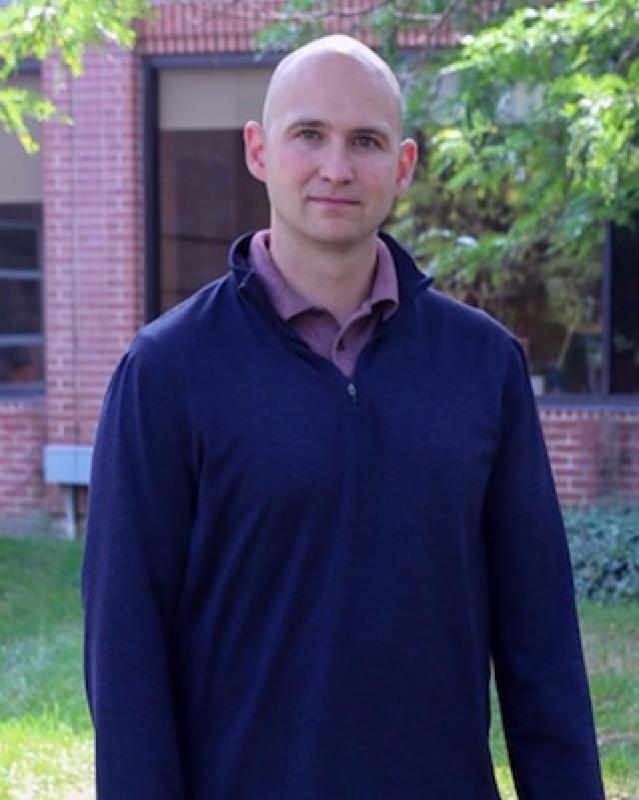COVID-19 Highlights the Value of Education
Upper School STEM Teacher and Research Collaborator Dr. Brandon Sullivan

The news, social media, and most of today’s conversations are saturated with COVID-19. Reflecting on that, I have come to appreciate one of the most important lessons we are learning during this pandemic, the value of education.
The COVID-19 coronavirus is about 100 nanometers in diameter. For perspective, you would need to chop a meter-stick into ten million slivers to achieve the same dimensions. Wellington students already know this from studying size and scale, as well as measurement prefixes with physics teacher, Keith Klingler P ’23. Despite its minute size, the virus is impacting our lives on an epic and global scale.
But that is how viruses work – they use their size to their advantage, replicating furiously within host cells and spreading. Our immune system does its best to respond with protective fevers and antibody attacks. The nature of viruses is scary, but our students are prepared to understand the anatomical and physiological mechanisms of illness after taking classes like Immunology as well as Medicine and Human Health with biology teacher Bryan Brautigam. In Pandemics and Epidemics, co-taught with Brautigam and Curt Hansen P ’12 ’15 of the History Department, students examine historical data, like the Flu of 1918 for instance, and learn about processes including the biology, diagnosis, prevention, and treatment of infectious diseases.
As we shelter in place, our Wellington community is adapting and innovating. Pete Collopy, strength and conditioning coach, is keeping our students active and fit with at home workouts and Instagram challenges. Our musicians, much like those singing on Italian balconies, are sharing their talents. This week, faculty were treated to the drive-by serenades of 9th grader Zach Sagone’s bass. Likewise, the Art Department and its brilliant students are sharing work through social media and encouraging others to be creative. While it may seem like the world is grinding to a halt, the Wellington community is accelerating.
COVID-19 is an appraiser, a practitioner with the knowledge and expertise to estimate an asset’s value. In real-time, the novel coronavirus is attesting the value of education. Today’s decisions from our local, national, and global leaders will have lasting impacts on our and future generations. Wellington students, thanks to thoughtful and diverse curricula built by our passionate faculty, are equipped to thrive during this pandemic. Our students are prepared for this challenge and have the skills, collaborative force, and resiliency to rise successfully.
With Governor DeWine’s stay-at-home order extended through at least April, the business landscape across our state and nation is evolving. Some businesses will close and never open, others may be severely crippled. Stimulus packages and favorable loans are coming, but the true impact of these supports won’t be known for months or years. The dynamics of these challenging situations are best understood in classes like Advanced Economics with history teacher, Erin Cornett ’96 P ’32 ’34. Some industries are learning to pivot to fulfill unmet needs like mask and ventilator production. Not only could Wellington’s Entrepreneurship students predict these emerging markets and opportunities, they could design novel solutions. Math teacher Cindy Locker P ’18 ’19 is preparing students to be successful in worlds that don’t yet exist.
Thankfully, we are supported and protected by concerned leaders such as Ohio Department of Health Director, Amy Acton. Every day at 2 p.m. she joins the Governor’s address to calm our fears, provide us with data, and protect our community. Each of her addresses are passionate, empathetic, and informative. The audience has grown to appreciate her ability to distill complicated scientific data to the masses. These are the same skills English teacher Drew Eberly masterfully builds into his lessons for Speech class.
Our world started turning upside down with the publishing of graphs – a series of curves that project outcomes based on our community’s ability to social distance. It took Ohio more than a week to amass its first 50 test-verified cases and then just three days to double that number. Now we see nearly 400 cases per day (April 1st results). The Ohio Department of Health has projected that these numbers will continue to grow. To many this growth pattern may seem fictional or too abstract, but students taking Algebra 2 with Keti Uppal are well-versed in exponential functions and solving for mathematical unknowns.
Our scientific and medical experts are currently analyzing data from around the world: cases, hospital beds, ventilators, deaths, recoveries, etc. The information being produced vastly exceeds one’s ability to compute with pencil or calculator. Instead, these collaborative teams are relying on analytical software and computational modeling. These are tools our students engage with in Computer Science: Big Data with Wellington Director of Technology, John Kruzan.